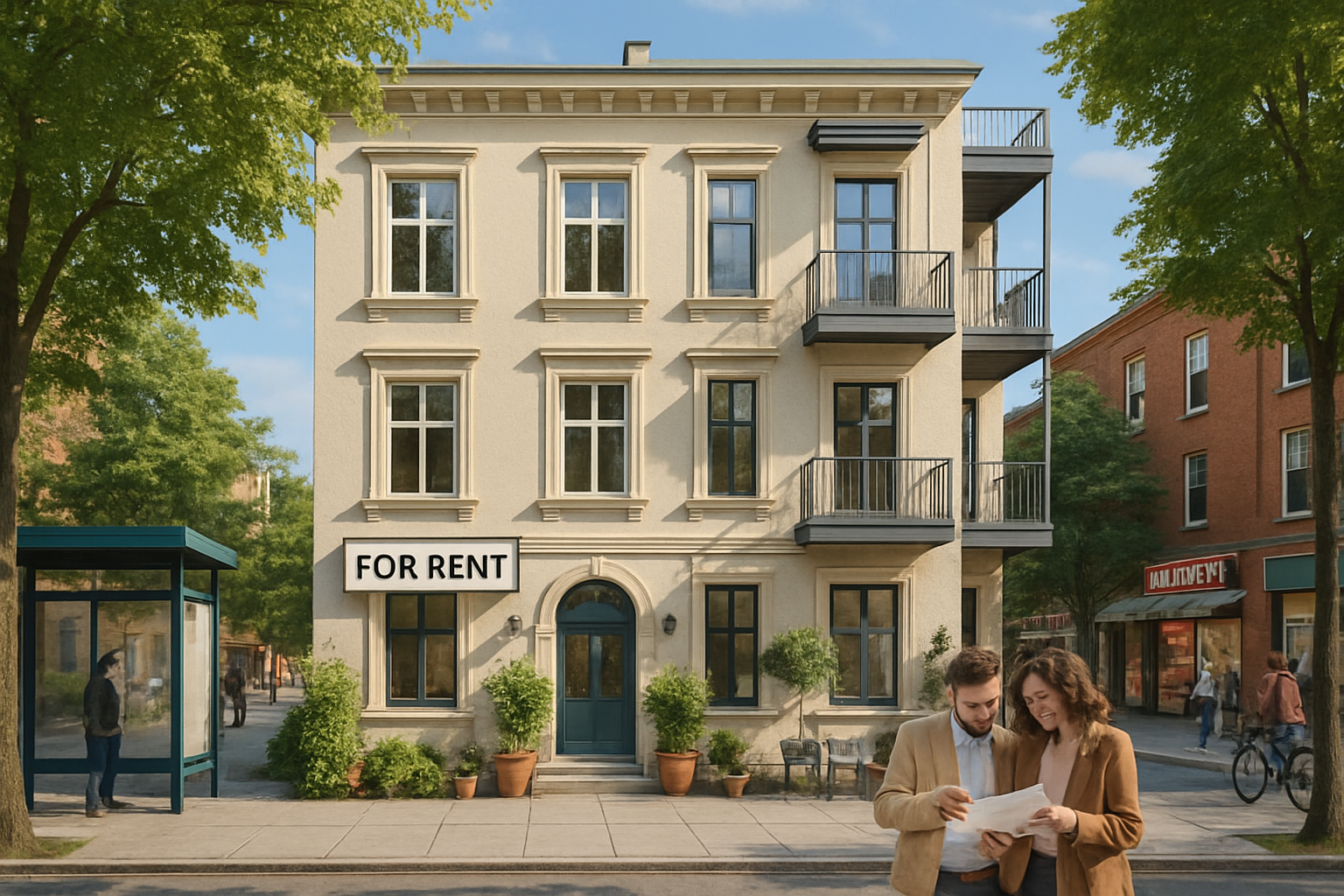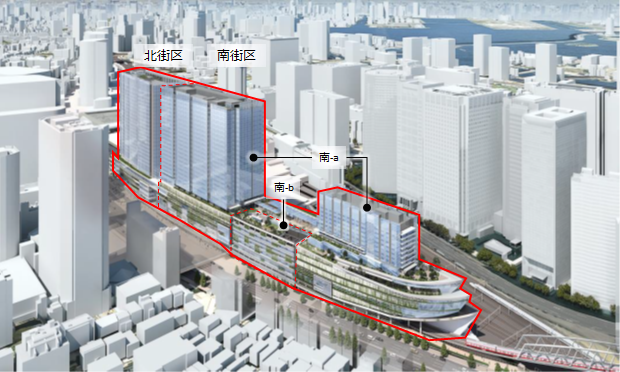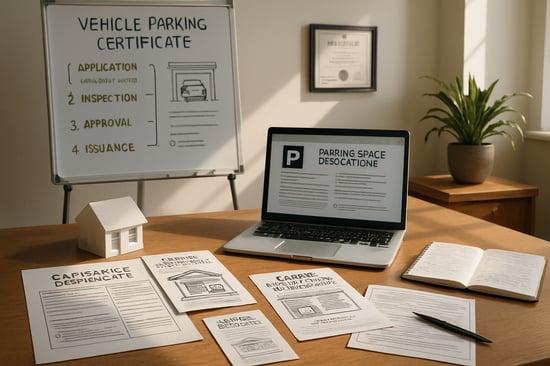For everyone involved in real estate, roadside land value is an important concept that cannot be avoided. We will explain this term, which you are sure to hear when considering inheritance, gift, or real estate investment, in an easy-to-understand manner for the general public.
Roadside land price is more than just a number. It is an important indicator used to calculate inheritance and gift taxes, as well as to make decisions about real estate investment. In this article, we will systematically explain the basic concept of roadside land price, how to specifically look it up, how to calculate it, and how it is actually used.
For the ultra-high-net-worth individuals in particular, an accurate understanding of roadside land prices is indispensable knowledge for asset management and inheritance planning. By acquiring the appropriate knowledge, you will be able to manage your assets more strategically.
Basic Knowledge of Road Prices
What is roadside land price?
Roadside roadside land price is the value per square meter of standard residential land fronting a road as determined by the National Tax Agency. This value is expressed in units of 1,000 yen and is mainly used to evaluate property for inheritance and gift tax purposes.
The name "roadside land price" is derived from the fact that roads are called "routes. In other words, the standard price of land set on each road is the roadside land price. This system makes it possible to evaluate land nationwide under a uniform standard.
The most important feature of road pricing is its fairness and transparency. The National Tax Agency publishes the prices as of January 1 of each year around July, thereby establishing a system that allows everyone to calculate the assessed value of land based on the same standard.
Types and Characteristics of Road Prices
There are two main types of roadside land assessments. It is important to understand that they are set for different purposes and by different calculation agencies.
| Type | Calculation agency | Principal Use | Price Level | Frequency of Updates |
|---|---|---|---|---|
| Inheritance tax roadside land price | National Tax Agency | Inheritance and gift tax property valuation | Approx. 80% of the official value | Updated annually |
| Property tax roadside land prices | Municipalities | Property assessment for property tax | Approx. 70% of posted value | Updated every three years |
Inheritance tax roadside land prices are used to calculate the assessed value of land for inheritance and gift tax calculations. They are set by the National Tax Agency based on a nationally uniform standard, and are approximately 80% of the posted value.
On the other hand, roadside land prices for property tax purposes are set by each municipality to calculate the tax base amount for property tax. These are set at approximately 70% of the posted value, and are reviewed every three years during the base year.
How roadside land prices are determined
Multiple factors are considered in determining the roadside land value. The National Tax Agency uses the following procedure to calculate roadside land prices.
First, official land assessments such as official land prices and prefectural land price survey prices are used as the standard. These prices are based on professional evaluations by real estate appraisers and reflect prevailing market prices.
Next, factors such as standard residential land use in the area, convenience of transportation, commercial facilities, and living environment are comprehensively considered. Correction rates are applied to corner lots, deep lots, and irregularly shaped lots, even if they face the same road.
Finally, the inheritance tax roadside land price is set at a level of about 80% of the posted price. This 80% level is set in order to keep the burden on taxpayers within an appropriate range while maintaining fairness in the taxation of inheritance taxes.
How to check and calculate the roadside land price
How to read the map of roadside land prices
The road map can be viewed free of charge on the National Tax Agency's website, "Property Valuation Standard Road Map and Valuation Multiplier Chart. By reading this map correctly, it is possible to calculate the assessed value of any given piece of land.
The road map contains the following information
Numbers: The number shown facing the road is the road value per square meter (in thousands of yen) for that road. For example, "300" means 300,000 yen per square meter.
Symbols for land leasehold percentage: The letters (A-G) listed after the roadside land price indicate the percentage of land leasehold.
| Symbol | Leasehold Ratio |
|---|---|
| A (%) | 90% (90% of the land) |
| B | 80% C |
| C | 70% D |
| D | 60% E |
| E | 50% F |
| F | 40% G |
| G | 30% G |
Indication of district classification: Use zones such as residential, commercial, and industrial districts are indicated by color coding and symbols.
Basic Calculation Method
The basic formula for land valuation using roadside land price is as follows.
Value of land for private use = roadside roadside land price × depth price correction ratio × acreage
Each element of this formula is explained in detail below.
Roadside roadside land price: The price per square meter of the road that the land fronts on.
Depth Value Correction R atio: This is a correction rate that is applied according to the depth of the land. Generally, too deep or too shallow a depth reduces the value of the land, so the further away from the standard depth (generally 20 to 25 meters in residential areas), the lower the correction rate.
Acreage: The area of land (square meters).
Specific Calculation Examples
Let's confirm the method of land evaluation by roadside land price through actual calculation examples.
Example 1: A residential lot facing a single road
- Road value: 300,000 yen (300,000 yen/m2)
- Depth: 35 meters
- Lot size: 700 square meters
- Depth value correction rate: 0.97 (corresponding to 35 meters)
Calculation Procedure:
- Value per square meter = 300,000 yen × 0.97 = 291,000 yen
- Value of land for private use = 291,000 yen × 700 m2 = 203,700,000 yen
Example 2: Residential land facing two roads
In the case of a corner lot or other land fronting on multiple roads, more complicated calculations are required.
- Front street value: 300,000 yen
- Side street value: 200,000 yen
- Depth of front side: 35 meters
- Depth of side: 20 meters
- Lot size: 700 square meters
Calculation procedure:
- Value according to front side line = 300,000 yen × 0.97 = 291,000 yen
- Additional value based on side lines = 200,000 yen × 1.00 × 0.08 = 16,000 yen
- Value per square meter = 291,000 yen + 16,000 yen = 307,000 yen
- Value of land for private use = 307,000 yen × 700 square meters = 214,900,000 yen
As shown above, land fronting on multiple roads generally has a higher assessed value.
Valuation of Land Leasehold
The valuation method for land with leasehold rights is also important.
Value of leasehold = value of own land x percentage of leasehold
In the case of the land in Example 1 above with a land leasehold ratio of 70% (C):
Value of leasehold = 203,700,000 yen × 70% = 142,590,000 yen
The leasehold ratio is set in consideration of the land use and commerciality of the area, and tends to be higher in urban commercial areas.
Differences between roadside land prices and other prices
There are several types of real estate prices, each with different purposes and characteristics. Understanding the exact relationship between roadside land prices and other land prices will enable more appropriate real estate valuation.
Comparison of Major Land Prices
| Type of Price | Calculation Institution | Principal Use | Price Level | Update Frequency |
|---|---|---|---|---|
| Actual Price | Market | Actual sales transactions | Market Price | Fluctuating at any time |
| Official land price | Ministry of Land, Infrastructure, Transport and Tourism | Land transaction index | 50-90% of actual price | As of January 1 of each year |
| Standard land price | Prefectures | Indicator of land transactions | Almost the same level as official land prices | As of July 1 of each year |
| Inheritance tax roadside land price | National Tax Agency | Inheritance and gift tax assessment | Approx. 80% of official land price | As of January 1 of each year |
| Property tax assessment | Municipality | Property tax assessment | Approx. 70% of official land value | Updated once every 3 years |
Difference from Prevailing Market Price
Prevailing market price is the market price that is established in actual real estate transactions. It is the most volatile price because it is determined by the balance of supply and demand, location conditions, condition of the building, and the circumstances of the seller and buyer.
Roadside land prices are set more conservatively than actual prices, and are generally 60% to 80% of actual prices. This is done to avoid placing an excessive burden on taxpayers when levying inheritance taxes.
However, depending on the region and the time of year, there may be a large discrepancy between the roadside land price and the actual price. In particular, in areas where land prices are rising rapidly, roadside land prices may not keep pace with actual prices.
Relationship with Official Land Prices and Standard Land Prices
Public land prices are standard land prices published by the Ministry of Land, Infrastructure, Transport and Tourism as of January 1 of each year. They are based on appraisals by real estate appraisers and are used as an indicator for general land transactions.
Standard land prices are the prices of standard land that are published by prefectures as of July 1 of each year. It serves as a complement to the official land price and is set at almost the same level as the official land price.
Roadside land prices are calculated based on these posted land prices and standard land prices. Specifically, inheritance tax roadside land prices are set at approximately 80% of the official land price, and this relationship is relatively stable.
Difference from property tax assessed value
Fixed property tax assessed value is the value that serves as the tax base for fixed property tax, and is calculated by the municipality. It is set at approximately 70% of the official land price, and is reviewed every three years in the base year.
The relationship between the inheritance tax roadside land price and the assessed value for property tax purposes is as follows
Approximate calculation formula: Inheritance tax assessed value ≈ Property tax assessed value ÷ 70 × 80
Using this relationship, it is possible to approximate the inheritance tax assessed value from the property tax assessed value. However, this is only an estimate, and a calculation using roadside land value maps is required for an accurate assessment.
Reasons for Price Differences
The main reason for these price differences is the difference in the purpose and character of each price.
The prevailing price directly reflects the balance of supply and demand in the market, and therefore fluctuates the most. Since speculative factors and individual circumstances also affect prices, they do not necessarily represent the objective value of land.
Public land prices and standard land prices are based on objective evaluations by experts and indicate the standard value of land. They reflect market fluctuations moderately, but also emphasize stability.
The roadside land price is set in consideration of fairness for tax purposes and reduction of the taxpayer's burden. As a result, they are more conservative than prevailing market prices and have some buffering effect against sudden land price fluctuations.
Understanding this pricing system allows for more strategic decisions in real estate investment and inheritance planning.
Situations in which roadside land prices are used
Importance in Inheritance Tax Valuation
Roadside land price is one of the most important criteria in inheritance tax assessment. When an inheritance occurs, a proper evaluation of the value of the land owned by the decedent is essential for the accurate calculation of inheritance taxes.
In the calculation of inheritance tax, property is valued at its value at the time inheritance begins (at the time of the decedent's death). In this case, land is valued based on the roadside land price for inheritance tax purposes. The following are the characteristics of the roadside land price method.
First, it ensures uniformity of valuation. Land anywhere in Japan is evaluated based on the same standard, making it difficult for inequities to arise between regions in the taxation of inheritance tax.
Second, there is simplicity of valuation. Without complicated real estate appraisals, it is relatively easy to calculate the assessed value of land using a road map and calculation formulas.
In addition, it is also considered to reduce the burden on taxpayers. Since the roadside land price is set lower than the actual value, the burden of inheritance tax is not excessively heavy.
Use in Gift Tax Valuation
Roadside land prices also play an important role in the evaluation of gifts for gift tax purposes. When land is transferred as a gift during one's lifetime, the property must be valued at the value at the time of the gift, and the inheritance tax roadside land price is used as the standard.
The use of roadside land prices in gift tax valuation is also important from the perspective of inheritance tax planning. The fact that the roadside land price is set lower than the actual price makes it possible to transfer assets efficiently.
It is particularly important to monitor trends in roadside land prices when implementing planned gifts during one's lifetime. In areas where land prices are on the rise, early gifts may reduce future inheritance tax burdens.
Reference Indicators for Real Estate Investment
In real estate investment, roadside land prices are one of the most important reference indicators. The following are some of the ways to utilize it when making investment decisions.
Grasping the appropriate price of an investment target: By calculating backward from the roadside land price, you can grasp the approximate appropriate price of the land. If the actual price is 1.2 to 1.5 times the roadside land price, it is considered to be in the appropriate price range.
Prediction of future inheritance tax burden: If there is a possibility of inheriting an investment property in the future, it is possible to estimate the amount of inheritance tax based on the roadside land price. This allows for a comprehensive assessment of the investment return and future tax burden.
Evaluation of the development potential of an area: By analyzing changes in roadside land prices, the development potential and future potential of an area can be evaluated. Areas with continuously rising roadside land prices are generally considered to have high investment value.
Trends in roadside land prices in 2024 and their impact on investment
In 2024, the national average of roadside land prices rose 2.3% from the previous year, marking the third consecutive year of year-on-year increase. This trend has the following impact on real estate investment and inheritance measures.
Rising trend in urban areas: Land prices rose 5.3% in Tokyo, indicating a marked increase in land prices in urban areas. This is attributed to the economic recovery from the Corona disaster and the resurgence of inbound demand.
Increased Inheritance Tax Burden: Due to the rise in roadside land prices, the assessed value of the same piece of land for inheritance tax purposes is higher. Assets that were previously within the basic inheritance tax exemption may now be subject to taxation.
Importance of investment timing: While early investment in rising land prices can lead to the expectation of capital gains in the future, there is also the risk of being caught at a high price. Careful investment decisions are required, keeping a close eye on trends in roadside land prices.
Cautions in Practice
The following points should be noted when using roadside land prices.
Application of correction ratio: Since actual land often has different conditions from standard residential land, it is important to apply an appropriate correction ratio. Corner lots, irregularly shaped lots, and lots with narrow frontage require different corrections.
Check for the latest information: Since roadside land values are updated annually, it is important to use the most current roadside land values at the time of valuation. Using outdated roadside land values will result in inaccurate valuations.
Consult an expert: For complex land valuations or large inheritance cases, it is recommended to consult an expert such as a licensed tax accountant or real estate appraiser. Proper valuation can avoid tax risks.
Conclusion
Roadside land value is an important concept that everyone involved in real estate should understand. The following are some key points to summarize what we have discussed in this article.
Basic understanding of roadside land value: Roadside land value is the value per square meter of standard residential land fronting a road as determined by the National Tax Agency, and is mainly used to evaluate property for inheritance and gift taxes. It is set at approximately 80% of the official land price, and is a highly transparent evaluation standard that is updated annually.
Mastering the calculation method: By understanding how to read a road map and the basic calculation formula (road value x depth price correction ratio x land area), you will be able to calculate the assessed value of land on your own. This course can also be used for more complex cases such as land fronting on multiple roads and valuation of land leaseholds.
Relationship with other price indices: Understanding the relationship with other land price indices, such as prevailing market price, official land price, and property tax assessed value, enables more comprehensive real estate valuation. It is important to understand the characteristics and purpose of each price.
Practical use: In addition to inheritance and gift tax assessments, roadside land prices are also useful for real estate investment decisions. in light of the upward trend in 2024, investment decisions and inheritance measures must be made at the appropriate time.
Suggestions for Next Actions
We recommend the following actions in order to apply your knowledge of roadside land prices to your actual asset management.
Assess your current asset situation: Calculate the assessed value of your real estate using the latest roadside land prices. This will give you an idea of the current inheritance tax assessed value.
Estimate your future tax burden: We recommend that you estimate your future inheritance tax burden, taking into account the upward trend in roadside land prices. Early action may reduce the tax burden.
Consult with an expert: For complex land valuations or large assets, please consult with a tax accountant or real estate professional. Appropriate advice will enable you to manage your assets more effectively.
INA&Associates Inc. provides professional consulting services to ultra-high-net-worth individuals on asset management and inheritance strategies. Please feel free to contact us for more information about strategic asset management using roadside land values. Based on our core management principles of "human capital" and "trust", we offer the best solutions for each of our clients.
Frequently Asked Questions
Q1: How do you evaluate land that does not have a roadside value?
In areas where roadside land prices have not been established, land is valued using the "Valuation Multiplier Chart. In the table, the assessed value for inheritance tax purposes is calculated by multiplying the assessed value for property tax purposes by a certain factor.
The specific formula is as follows
Inheritance tax assessed value = property tax assessed value x valuation multiplier
The valuation multiplier varies depending on the area and type of land (residential land, rice paddies, fields, forests, etc.) and can be confirmed on the National Tax Agency's website. Generally, the valuation multiplier method is used in areas far from urban areas and agricultural land.
Q2: Do roadside land prices change every year?
Yes, inheritance tax roadside land prices are updated as of January 1 each year and published by the National Tax Agency around July. This is to properly reflect changes in land prices and to maintain fairness in inheritance tax assessments.
On the other hand, property tax roadside land prices are reviewed every three years (most recently in FY2024), and in principle, the same prices are applied for three years. However, if there is a significant change in land prices, revisions may be made in the interim fiscal year.
Q3: Why is there a difference between the roadside land price and the actual sales price?
The difference between the roadside land price and the actual sales price (actual value) is caused by the following factors
Difference in the level of the roadside land price: Roadside land prices are set at approximately 80% of the official land price, which is more conservative than the actual price. This is done to keep the taxpayer's burden within an appropriate range for inheritance tax purposes.
Influence of market factors: The prevailing price fluctuates due to the balance of supply and demand, speculative factors, and the individual circumstances of sellers and buyers. In particularly popular areas, the actual price can significantly exceed the roadside land price.
Difference in time of valuation: Although the roadside land price is the price as of January 1, actual transactions are conducted throughout the year, and are therefore affected by price fluctuations depending on the time of year.
Q4: Are there any points to be noted in land valuation using roadside land prices?
The following points should be noted when valuing land using roadside land prices.
Application of correction rates: Since actual land often has different conditions from standard residential land, it is important to apply appropriate correction rates. Depth value correction rates, side line impact addition rates, corner lot addition rates, irregularity correction rates, etc. must be accurately applied.
Use of the latest information: Since roadside land values are updated annually, it is important to use the latest roadside land values at the time of valuation. Also, check the errata of the road map, and if there are any corrections, use the corrected value.
Need for professional judgment: For land with complex shapes or special conditions, professional judgment may be required. We recommend consulting a tax accountant or real estate appraiser.
Q5: How do increases in roadside land prices affect real estate investment?
Increases in roadside land prices can affect real estate investments in the following ways
Increased investment value: Increases in roadside land prices generally reflect increases in land prices, which can be expected to increase the asset value of your real estate holdings. In particular, areas with continuous increases are considered to have high potential for future capital gains.
Increased Inheritance Tax Bur den: The tax burden on inheritance of investment real estate may increase. Since the assessed value for inheritance tax purposes will be higher due to increases in roadside land prices, it will be more important to prepare for inheritance taxes in advance.
Importance of investment timing: While early investment in rising land prices can lead to future returns, there is also the risk of investing at a higher price. Careful investment decisions are required, keeping a close eye on trends in roadside land prices.

Daisuke Inazawa
Representative Director of INA&Associates Inc. Based in Osaka, Tokyo, and Kanagawa, he is engaged in real estate sales, leasing, and management. He provides services based on his extensive experience in the real estate industry. Based on the philosophy that “human resources are a company's most important asset,” he places great importance on human resource development. He continues to take on the challenge of creating sustainable corporate value.

.png)













